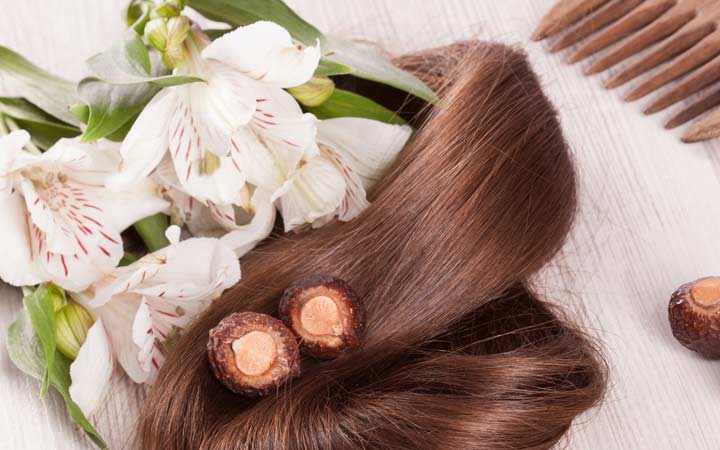Posted by Kalyani Hari
Reviewed by Dr. Zeel Gandhi
June 12, 2020
Do you know that your unhealthy hair is a reflection of your bad diet and lifestyle? Yes! Traditional Ayurvedic science thrusts upon the interdependence of hair health with what you eat and how you live.
“Besides topical treatments with medicinal herbs, Ayurveda involves the concept of healthy Ahara-Vihara (diet and lifestyle), which benefits the wholesome well-being of your body and mind along with your hair health,’’ says Dr. Zeel Gandhi, Chief Ayurvedic Doctor at Vedix.
This holistic approach of Ayurveda calls for a consistent hair care routine for healthy hair. Let’s discuss what that is and how you can adopt it in detail.
Ayurvedic Hair Care Routine: The 13 Vital Steps
1. Know Your Hair Type
According to Ayurveda, the three vital energies Vata, Pitta and Kapha regulate our bodily activities [1]. Each individual is a combination of these tridoshas, with one or two doshas in dominance. This determines your hair type and hair health.
A. Vata Hair Type
You will have a Vata hair type if you have Vata-dominant Prakriti. Proper nutrition to your hair follicles keeps Vata dosha in balance. A normal Vata hair type tends to be thin, straight hair with higher porosity.
When Vata dosha aggravates in your body, it causes dryness of your scalp and hair with very low sebum production. This eventually results in dry and frizzy hair, split ends and hair loss.
B. Pitta Hair Type
You will have a Pitta hair type if you have Pitta dominant Prakriti. Pitta is responsible for metabolic activity in hair, regulates the production of pigments and hair proteins.
A healthy Pitta hair tends to be wavy with a medium thickness. Premature greying, clogged follicles with bacteria build-up, scalp inflammation, redness, hair loss, etc. are caused when Pitta is imbalanced.
C. Kapha Hair Type
You will have a Kapha hair type if you have Kapha dominant Prakriti. Kapha energy is responsible for your hair structure and its lubrication. A healthy Kapha hair is thick, lustrous, and curly.
Any imbalance in Kapha results in overproduction of sebum on your scalp, which eventually leads to oily dandruff with a greasy scalp, itching, hair fall, etc.
Understanding your hair type and ongoing state of your dosha levels helps you involve specific Ayurvedic herbs in your hair care routine that target your unique hair needs.
2. Choose Hair Oil And Shampoo Based On Your Hair Type
Make sure your fundamental hair products, i.e your hair oil and shampoo, contain Ayurvedic herbs that work on your aggravated dosha levels. Choosing wrong hair products may worsen your hair condition and cause an imbalance in your doshas.











